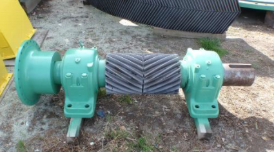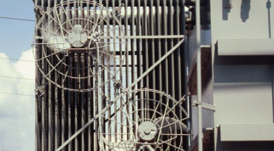Applying Infrared Imaging Techniques to Marine Surveying
InfraMation 2003 Application Paper Submission
John (JACK) N. Allinson
J.N. Allinson Associates, Inc.
ABSTRACT
Marine surveyors are to the marine industry as building and home inspectors are to the commercial and residential real estate industry. Marine surveyors’ opinions are relied upon to document the “Condition and Value” of the vessels (boats, ships) they inspect. When marine surveyors examine a vessel, they rely heavily upon experience and what can be seen, heard, and felt. Traditionally, visual anomalies seen with the unaided eye often are the sole basis for further testing. Infrared images are an effective tool in extending a marine surveyor’s visual ability to detect anomalies. This paper illustrates the use of the FirstMate™ infrared camera from FLIR. Presented are examples of what can be found when inspecting structural, mechanical, and electrical systems on boats. It will refer to common deficiencies found in vessels and show how infrared imaging has become an effective tool in documenting problems found during inspections.
INTRODUCTION
Common to all marine surveys are deliverables that provide a “Condition and Value” of a vessel. Typically the “Condition” of a vessel is based upon its structural integrity and how the systems onboard function. Inherent in the “Condition” are generally accepted terms that reflect whether a boat is ready for sale and required no additional work. Similar to the real estate industry, the “Value” of a vessel is based upon recent sales comparables and income earning potential of the vessel.
When vessels are inspected, they are looked at with respect to the mandatory standards promulgated by the United States Coast Guard (USCG), under the authority of Title 46 United States Code (USC); Title 33 and Title 46, Code of Federal Regulations (CFR), and the voluntary standards and recommended practices developed by the American Boat and Yacht Council (ABYC) and the National Fire Protection Association (NFPA).
Two business segments are typically served:
• Commercial – Tugboats, Passenger Vessels, Shipping, and Fisheries
• Recreational – Yachts and Small Craft
Within each business segment inspections can be broken down into the following types:
• Prepurchase – requested by buyer when purchasing a new or used vessel
• Seller – requested to help prepare for the sale of a vessel
• Insurance – required by an underwriter(s) to determine if vessel is an acceptable risk
• Appraisal – required by a lending institution, or legally for estate settlements and donations
• Damage – required to settle an insurance claim or for legal action
EXAMPLES OF INFRARED APPLICATIONS
Electrical (Figures 1 and 2)
• Direct Current (DC) systems
• Electrical panel, batteries, and bundled wires
• Alternating Current (AC) systems
• Shore power, house power, electrical panel, and bundled wires.
Mechanical (Figures 3 and 4)
• Motors, electric and internal combustion
• Bearings
• Gears
• Refrigeration
Vessel Construction Materials and Common Problems
Fiberglass Reinforced Plastic (FRP) hulls (Figures 5 and 6)
• Moisture accumulation
• Osmotic blisters
• Delamination
Wooden boat hulls (Figures 7 and 8)
Open seams between wooden planks
• Moisture accumulation
• Wood rot
• Mechanical fasteners
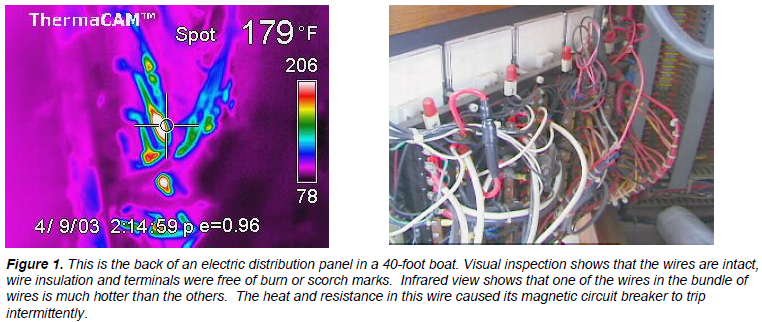
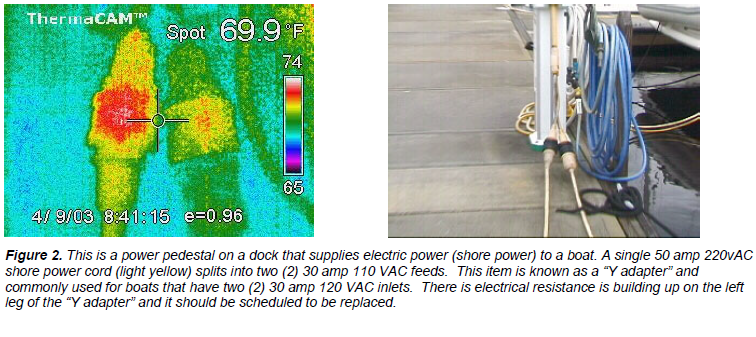
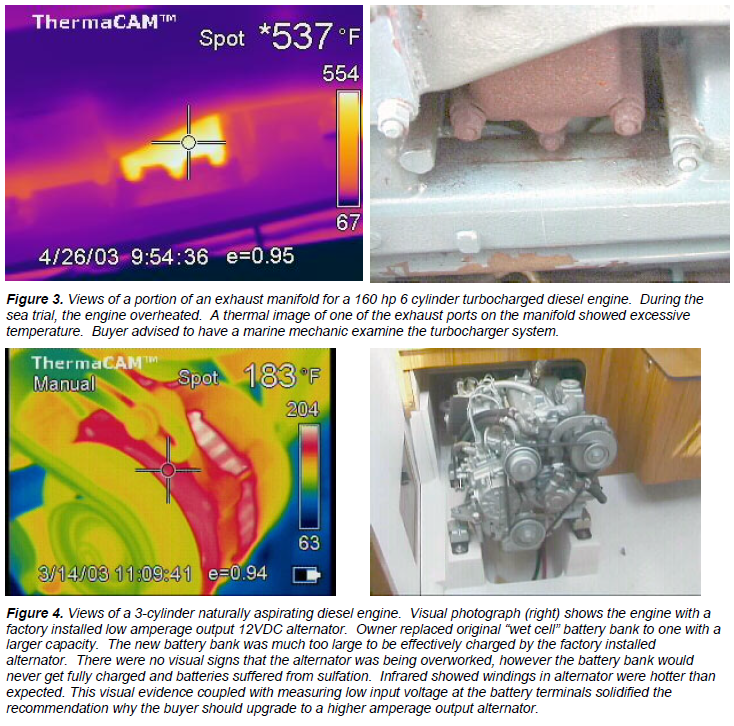
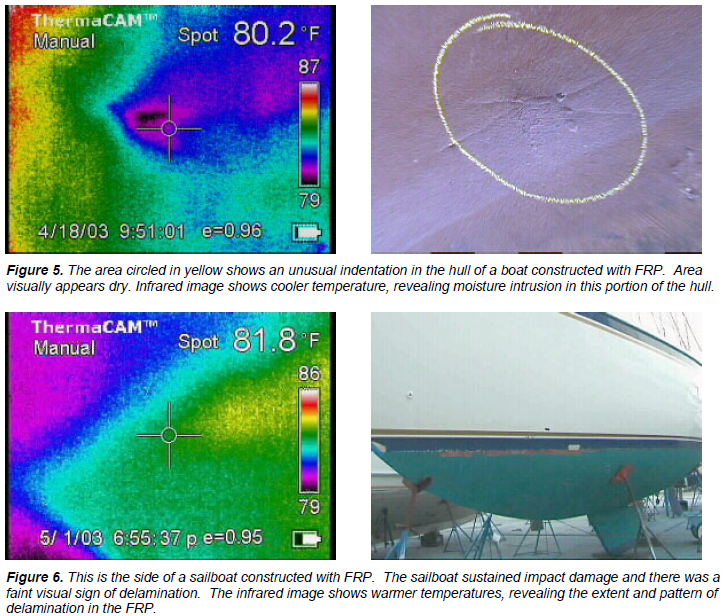

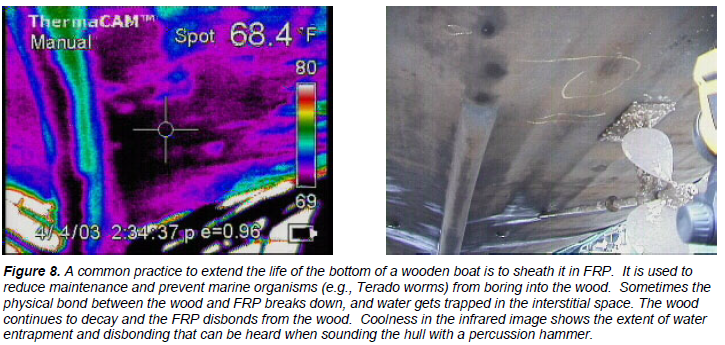
Composites – foam and wood coring materials (Figures 9 and 10)
• Delamination
• Moisture accumulation
• Disbonding

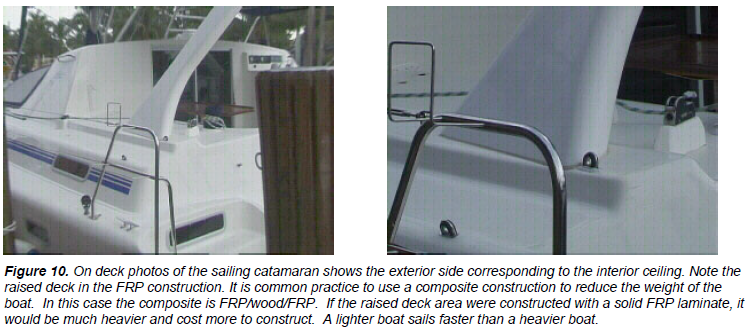
Other materials that lend themselves to IR imaging
Carbon fiber – used to construct sailboat masts, booms, arches, and hulls.
• Delamination
• Shows fractures from point source loading
Metal – aluminum and steel
• Surface leaks on fuel, holding, or water tanks
• Moisture accumulation in select areas in the hull interior
Concrete (Ferro cement)
• Identify fractures and cracks
• Moisture Accumulation
• Disbonding between cement and wire reinforcement
• Locate metal reinforcement
SUMMARY
Infrared imaging clearly is a valuable tool for a marine surveyor. Like other investigative tools, it should not be used as the sole source for identifying a problem. A surveyor’s experience, knowledge of how the boats systems function, the construction methods used, and use of other supporting investigative tools are key to the accurate interpretation of what the infrared images show.

